12. Oct 2017 - DOI 10.25626/0076
Dr. Jakub Jareš is a researcher at the Institute for the Study of Totalitarian Regimes and teaches museum studies at Charles University in Prague, Czechia. Previously he worked as journalist, museum curator and as historian at the Institute of the History and Archive at Charles University, where he obtained his Ph.D. with a thesis on "Post-war Reform of Czech Higher Education 1945–1950." Co-author of several books on the history of universities in socialist Czechoslovakia, his current research concentrates mnainly on exhibiting contemporary history. He is a member of the Editorial Board of the Cultures of History Forum.
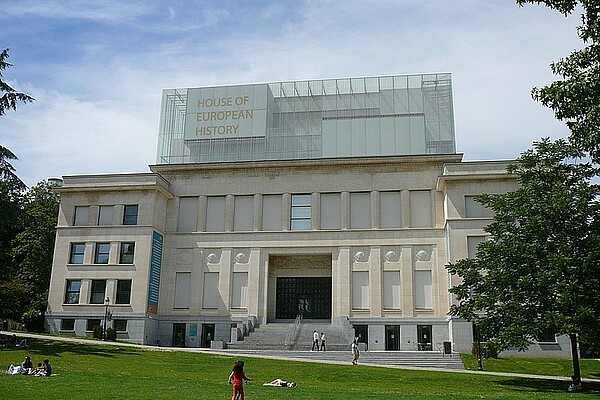
When the German historian and politician, Hans-Gert Pöttering, from the Christian Democratic Union/European People’s Party (EPP) became the President of the European Parliament in 2007, he immediately announced in his inaugural speech that he would like to see a museum of European history in Brussels. After ten years of preparation, the House of European History was finally opened at the beginning of May 2017. The purpose of the museum is to communicate to the public Europe’s common story, which stands above the 28 national histories, and to be a place for exploring and creating a European identity in the future. Can it successfully achieve its mission?
For most Europeans, the opening of the House of European History in May 2017 came most likely as a surprise, that is, if they noticed at all. In principle, the museum was created in an athmosphere of silence, even among the professionals, and without much discussion in the media. An exception was several articles in the British press that often refered to parliamentary speeches and other responses of MEPs from the UK Independence Party (the main advocates of Brexit) who complained about the museum’s excessive budget. For instance, The Daily Telegraph wrote in 2011 that
[t]he contribution of British taxpayers to the museum, created by MEPs ‘to cultivate the memory of European history and European unification’, will be £18.6 million at a time when many museums and galleries in Britain face painful funding cuts.[1]
With the exception of Germany, the media in other EU Member State kept rather quiet about the museum. Only one article can be found in Czech on-line media from 2012 which, however, borrows the information and economic arguments presented from British newspapers. The limited media attention cannot be explained by a lack of interest among European citizens, but was rather the result of a conscious decision by the museum’s initiators who decided to present their discussions and plans only in a limited scope, and if at all possible, only in professional forums. Behind this decision was the understandable concern that if an extensive public discussion commenced, various national lobbies and politicians would try to interfere in the process and advocate for their own versions of history - with potentially deteriorating effects for the establishment of the museum.
The secretive nature of the planning process, however, did not prevent the museum project from being subjected to national and political influence or conditionality, nor could it. The museum’s founder is the European Parliament, whose Conference of Presidents appoints the museum’s Board of Trustees and its Academic Committee. The Board of Trustees is chaired by the already mentioned Hans-Gert Pöttering, and the Academic Committee by the Polish historian Wlodzimierz Borodziej. The members of the Academic Committee also include the director of the German House of History Hans-Walter Hütter, the British historian Norman Davies, and the historian Oliver Rathkolb from the University of Vienna. These key actors show that Central Europeans had an important impact on the creation of the museum. In addition, the 30-member curator team carried out its own work under the leadership of the Slovene Taja Vovk van Gaal.
The conceptual basis for the museum was prepared in 2008 by the nine members of the Committee of Experts, including the already mentioned Wlodzimierz Borodziej and Hans-Walter Hütter, who submitted their work to the President of the Parliament as materials for further elaboration.[2] In 2013, the European Parliament published a second similar report that roughly presented the future shape of the museum and the principles of its work.[3]
The museum authors also presented the project at several academic conferences, for example, at the conference “Europa und sein Osten” organized by Imre Kertész Kolleg in Jena in the summer of 2011, and at the conference “Entering the Minefields: the Creation of New History Museums in Europe” organised by Linköping University in Sweden in 2012. The proceedings of both conferences were subsequently published.[4] Among others, the sociologist Till Hilmar presented in a very detailed and informative paper a step-by-step clarification of the museum’s concept. The bibliography for this text also contains references to other academic papers that were issued during the process of preparing the museum.[5]
I will thus proceed directly to the question of what type of museum was actually established in Brussels and also what type of historical narrative of Europe it offers to visitors.
The museum is located in a building erected in 1935 in Léopold Park in Brussels several metres away from the European Parliament. The art deco style building originally housed a children’s dental clinic and was built by the inventor of the Kodak camera, George Eastman, as a part of his charity projects. The building was completely renovated for the museum and fitted with modern furnishings, so seven floors may be used for the exhibits.
Every visitor receives a tablet and earphones at the entrance after going through the security checkpoint. All exhibition texts and descriptions of the exhibits are recorded on the tablets in 24 languages, which will automatically start playing upon entering a room, and so visitors may decide what interests them most. Hence, the entire exhibition is without texts or captions, which seems out of the ordinary for visitors who are used to classical exhibitions.
The main message of the exhibition may be summed up by the words “Mapping the European decline and its recovery”. The exhibition recounts the story of a powerful continent in the 19th century, through the First World War, and leading up to the devastating consequences of Nazism and Stalinism at a time when Europe was on the edge of demise. New hope came to the West thanks to European integration after 1945, and after 1989, also to the East, when the divided continent was reunited. Today, we look back and we see that the past was conflictive, but after all we know how to remember together and in peace. And since history itself cannot be changed, the museum would like to develop and promote this shared memory. So much for a very brief overview of the museum. At first glance, this seems to be a rather good proposal. However, after a closer look, certain weaknesses appear.
The exhibition begins by exploring the notion of what Europe exactly is. The authors first ask about Europe's geographic boundaries and whether they actually exist. Is Europe just a notion? And to what extent does it originate from a common cultural heritage? The responses of the exhibition authors to these questions are not exhaustive. They outline only certain indicative dimensions and proposals for possible responses.
For example, the geographic questions are answered through maps that show various perspectives on Europe across the ages and continents: a Baroque map, for example, presents Europe as an allegorical figure of the reigning Virgin Mary. On a Chinese map of the world (see image), Europe is a marginal periphery in the left corner of the map. Thus, instead of one answer, the authors show a multiplicity of perspectives.
The issue of the ideological origins of Europe is resolved by a similar kaleidoscope. Several counter-positions are presented through juxtaposing historical exhibits with modern photography. For example, philosophy as one of the foundations of Europe is presented by a bust of Aristotle and the photography of Slavoj Žižek. It is clear from this introductory part of the exhibition that the museum will be notably self-critical in the presentation of European history. In addition to Christianity, the Enlightenment, humanism, democracy, justice, and the legal state, the exhibition also takes up the slave trade, colonialism, genocide, Marxism, and capitalism. Thus, a statue of a sailor with a gun, which was created by an unknown African artist in the 16th century, shows that the viewpoint of others with respect to Europeans has not always been flattering.
The museum continues its historical narrative with the revolutions of 1789 and 1848. Practically the entire 19th century is portrayed as a revolutionary period where human and civil rights were asserted, nations were born, and industrialization and the free market were inevitably expanding. Thanks to this as well, Europe became a world power, which – as the authors emphasize once again – had its darker side in the form of colonialism.
The end of this era begins with the First World War, introduced with a Browning pistol, model 1910, the same model that was used by the assassin Gavrilo Princip in Sarajevo. The museum presents the Great War as the first European event that essentially the entire continent remembers to this day and that had consequences for the lives of almost every European family. Hence, the exhibition presents it in this spirit. A large map of Europe dominates the space on which postcards are placed for each country sent home by soldiers on the front with a message to their families, parents, or lovers (see image). In this way, the soldiers from both sides of the trenches symbolically meet each other with tender greetings.
This positioning of national exhibits next to each other is surprisingly effective and is one of the highlights of the entire museum. This clearly illustrates that the developments in 'other' countries were for the most part very similar to what the people know from their 'own' national histories and family stories. For example, it could be surprising for visitors from the Czech Republic that they can see printed materials from the Czechoslovak constitution of 1920 right next to the constitutions of other democratic states that were established after the end of the First World War. Most students of Czech schools have learned in their history courses that interwar Czechoslovakia was something of an exceptional case, a beacon of democracy surrounded by dictatorships. Confrontation with the fact that not only Czechoslovakia, but also Finland, whose constitution is located right next to the Czechoslovak one, was a successful democratic country showcases such national stereotypes to visitors, and perhaps even helps them to dismiss them altogether.
However, only a limited amount of space in the museum is given to the history of democratic states during the interwar period. Attention is quickly turned to the establishment of the Soviet Union, the rise of Nazi Germany, and the road to another war. In fact, the narrative line of the exhibition is primarily based on a comparison of these two ideologies and dictatorships – Nazism and Stalinism.[6] Both systems are placed on an equal footing, which reflects the relatively persistent efforts by the new EU member states to give their memories of Communism a similar status as the hitherto dominant Western European memory of Nazism and the Holocaust.[7] The Polish, in particular, are advocates of this 'balanced' memory since they are the main representatives of the historical experience that connects the negative outcome of Nazism and Communism. It is no coincidence then that many Polish MEPs supported the drafting and approval of the European Parliament Resolution of 2 April 2009 on European conscience and totalitarianism, which expressly states, “whereas the dominant historical experience of Western Europe was Nazism, and whereas Central and Eastern European countries have experienced both Communism and Nazism”, and which introduced the 23rd of August, the day of the signing of the Molotov-Ribbentrop Pact, as the common day of remembrance for the victims of both Stalinism and Nazism.[8]
Hence, the House of European History stands on this foundation defined by Europe’s recent politics of memory, which like all multi-party politics, is most probably a compromise: Western Europeans surrender the notion that Nazi crimes were entirely unprecedented, and Eastern Europeans are satisfied with the fact that only the Stalinist period, as opposed to the entire communist period, is acknowledged as the most atrocious period and as criminal. It is a possible narrative for presenting history. However, the question is to what extent this is a good basis for finding a common European identity.
After the Second World War, the exposition of the stories of the West and the East begin to interconnect. However, attention is primarily given to the West and its gradual integration. The museum, nevertheless, shows both sides of the iron curtain as being integrated in every-day life. It concentrates on similarities in the development of public healthcare, lowering child mortality rates, increasing access to education, or consumer culture and design. The main exhibit here is an automobile that symbolizes the new lifestyle in the West and the East – the car is actually a Yugoslav “Zastava” manufactured under a licence from the Italian Fiat company.
However, this shared perspective of post-war modernization ends at the beginning of the 1970s. From this time, the West and the East are portrayed once again as completely different worlds. While the West deals with women’s rights, ecology, new social movements, and modern art, the East is depicted as half-empty stores with uniform, unattractive goods. Not that substantial differences did not exist between the two blocks, but it is not clear why the perspective suddenly changes so radically. As if the authors of the exhibition were out of breath or rather needed to exhibit a more striking contrast so that the wave of Central European and Eastern European revolutions in 1989 would be better understood.
After the fall of Communism, the only story left is that of the European Union, its successes as well as hardships. The museum displays paper bricks formed from the shredded remains of Slovak crowns and Deutschmarks, a T-shirt from advocates of the UK 'Vote Leave'-campaign in 2016, or children’s shoes pulled out of the Mediterranean Sea, a reference to the refugee crisis. Such a conclusion seems to be somewhat blurred. Instead of a view to the future or a summary of previous issues, what exactly the foundations of Europe are, there is only an exhibit of news headlines from yesterday and the day before yesterday.
The somewhat inconclusive conclusion confirms once again that the core of the exhibition remains in the parallel histories of East and West, their divergent experiences with totalitarian regimes, and their new integration after 1989. However, you do not have to be an historian or politician to understand that this story was clearly presented from a Central European and especially German perspective. This impression is further strengthened by the fact that the name of the museum is taken from the German Haus der Geschichte, and that from a scenographic and exhibition viewpoint, the Brussels museum reminds visitors of its forerunners in Bonn and Leipzig.
In addition, such a historical narrative on the East-West gradient is more or less acceptable to other Central Europeans, Poles, Czechs, Slovaks, as well as Hungarians or the Baltic nations. However, the question remains whether Greeks, Italians, Croatians, Portuguese, or Irish can also find themselves in the new European museum. Although events relating to their histories are represented in the exhibition (the Spanish Civil War, the Carnation Revolution in Portugal, etc.), these are always on the periphery, outside the exhibition’s primary focus.
Proof of the German and broader Central European character of the museum exhibition is also the conviction that identity can be constructed on the basis of a culture of memory connected with trauma. Thus, the European museum is full of negative or problematic histories and their critical reflection – be it colonialism, both world wars, Nazism and Stalinism, limitations to free society, or the contemporary problems in the EU. This culture of (negative) remembering proved useful to Germany, and the German approach is also inspirational and influential in the historiographic and public discussions of many other countries. However, there is the question of whether a critical understanding of the past is enough for the creation of identity, especially the European identity, which is not supported by a common language or a long tradition for the time being.
Thus, the question is whether the European museum should not concentrate more on positive historical models, and especially on European values. This, of course, would be more complicated and would not be possible without heated discussions. It is still surprising how little space is devoted to Christianity in the current exhibition when this is historically one of the main uniting forces of Europe. Perhaps such a topic would come into too much conflict with the secular nature of the modern states, atheism, and especially Islam. Even the intellectual elite of Europe does not see to know how to avoid the primitive stigmatization of Muslims, and on the other hand, describe the real problems of living together.
As to principle values, the House of European History offers resistance to totalitarian ideologies and emphasizes human and civil rights. It follows from this that Putin’s Russia in particular is presented in the exhibition as a contemporary antithesis to Europe. Thus, immediately at the start of the exhibition, where the authors map out the ideological heritage of Europe, a photo of a gay activist arrested at a demonstration in Moscow is positioned under the statue of Justice. However, the anchored values that the exhibition offers are primarily negative – it is resistance to past and present dictatorships rather than a positively formulated base on which the integrated continent should rest.
The House of European History was not the first attempt to establish a European museum. However, two of the previous projects were not successful. In 1997, an initiative to establish the Museum of Europe had begun under the leadership of the historian Krysztof Pomian. Although the museum had organized four large exhibits, it did not manage to attain the support for founding a permanent institution.[9] An even worse situation occurred with the Bauhaus Europa project in Aachen, Germany where citizens rejected in 2006 the construction of the new museum building. The only successful project so far was in France. In 2013, the Museum of European and Mediterranean Civilization (MuCEM) was opened in Marseille. However, this museum has only a limited geographical scope.
Hence, the House of European History is the first museum that has attempted and succeeded to present history from a pan-European perspective. Created almost without any public discussion it shows some conceptual weaknesses, and while trying to connect the experiences of the East and the West, it has marginalized a large part of the continent's north and south. Yet despite all of this, the positive side is that such an institution exists. It can now serve as an institutional cornerstone of a pan-European public history, that can be further refined, criticized and built on in the future. In his inauguration speech in 2007, Hans-Gert Pöttering declared that he would like to create a "locus for history and for the future where the concept of the European idea can continue to grow".[10] This common European concept that will hopefully one day bring the entire continent together undoubtedly cannot be created overnight. Thus, it is too early to tell whether the House of European History will be a success. Perhaps in 20 or 30 years, an historian who has not yet been born will start to work there and will start creating a better European narrative than the existing one.[11]
Translated by Andrew Fisher-McKinney
Jakub Jareš: The House of European History: In Search of a Common History and its Future. In: Cultures of History Forum (12.10.2017), DOI: 10.25626/0076.
Copyright (c) 2017 by Imre Kertész Kolleg, all rights reserved. This work may be copied and redistributed for non-commercial, educational purposes, if permission is granted by the copyright holders. For permission please contact the editors.
Official Website of the House of European History
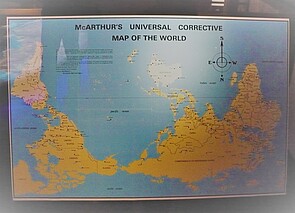
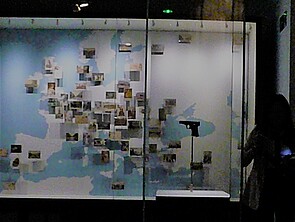
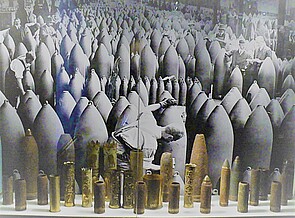
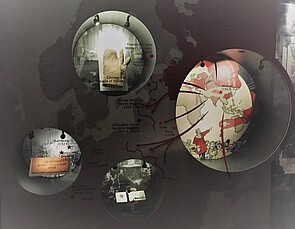
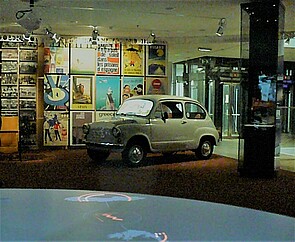
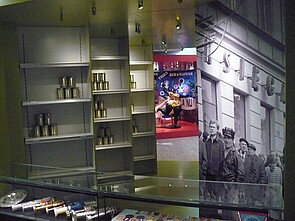
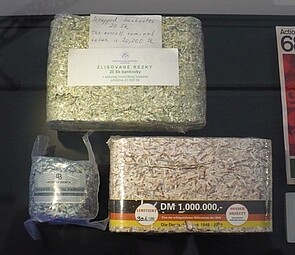
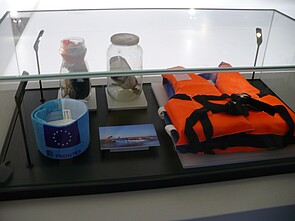
Patrick Metzler · 21.12.2022
Localizing “Our Germans”: The New Permanent Exhibition in Ústí nad Labem
Read more
Veronika Pehe · 11.05.2022
‘The Nineties’ on TV: Remembering the Transformation Era in Czech Popular Culture
Read more
Jiří Smlsal · 25.01.2022
The Stench of Pigs and the Authority of Historians: Czech Debates About the Lety Concentration Camp
Read more
Karolína Bukovská · 25.11.2021
(Re)construction of Czech History: The National Museum and its New Permanent Exhibition on the Twent...
Read more
Veronika Pehe · 21.07.2021
Czech Prime Minister Implicated as Communist Secret Police Agent – Yet Nobody Cares
Read more
Get this article as PDF download (including pictures).